As part of the 50th anniversary celebration of national reunification, VietNamNet presents a series titled “April 30 - A new era,” featuring experts, military leaders, and historical witnesses who share memories, lessons, and insights from the victory in the resistance war against the United States.
These reflections highlight the strength of national unity, mobilizing the people, leveraging international support, and valuable lessons in diplomacy and military strategy for national defense.
They also emphasize the ingenuity and resilience of a people’s war, and the importance of internal strength in building and safeguarding the country.
VietNamNet invites readers to explore key revolutionary bases hidden within enemy strongholds, such as the Cu Chi Tunnels, Rung Sac Base, Vuon Thom Base, Ban Co labor quarter, and secret underground hideouts in Saigon.
The Ho Chi Minh Campaign Museum, located at 2 Le Duan Street, District 1, Ho Chi Minh City, is housed in an early 20th-century building designed by a French architect.
Before 1975, the building served as the National Defense College. After reunification, it initially became the Ho Chi Minh Campaign Exhibition Room under the Museum of the Southeastern Armed Forces. In late 2020, the Ministry of National Defense elevated the exhibition to a full-fledged museum managed by Military Zone 7. It was officially inaugurated in January 2021.
The museum showcases 6,293 artifacts and over 500 documentary images, including 2,881 original items directly related to the Ho Chi Minh Campaign.
The campaign, which took place from April 26 to 30, 1975, was the final operation of the Spring 1975 General Offensive and Uprising, marking the end of the resistance war against the United States and the reunification of Vietnam.
A highlight of the museum's main exhibit area is a large topographic model that recreates the campaign's major developments. The area also features multilingual film screenings in Vietnamese, English, and French, vividly retelling the campaign’s events.
Among the displayed artifacts is the original draft plan for the Ho Chi Minh Campaign, preserved in its entirety.
The museum also houses a recognized national treasure, officially designated by the Prime Minister in October 2012: the Ho Chi Minh Campaign Operations Duty Logbook.
This logbook was meticulously kept by officers on duty at the Command Headquarters in Cam Xe, Binh Duong Province, documenting detailed battle developments between April 25 and May 1, 1975.
The logbook serves as a historical witness to the intense, decisive combat activities carried out across various fronts and units during six consecutive days and nights. It also captures heroic and glorious moments of the campaign.
One photograph features the flag of the National Liberation Front of South Vietnam flying atop Phu Van Lau when Hue was liberated on March 25, 1975.
The flag, now faded with time, bears a red and blue background with a gold star at the center. It stands as a testament to the nation's yearning for independence and freedom.
Hundreds of images and maps detailing the Ho Chi Minh Campaign's progression line the museum’s walls. One prominent image shows a liberation tank advancing into the Independence Palace.
The museum also preserves weapons, flags, and banners that were used during the campaign.
A motorbike, used by Southeastern liberation forces to deliver documents and battle orders from the headquarters to units between 1965 and 1975, is also on display.
The museum features portraits of commanders and numerous personal artifacts. Among them is the ceremonial uniform of General Le Duc Anh, one of the highest-ranking officers who played a key role in planning and directing the offensive fronts of the campaign.
One outdoor exhibit showcases a 12-barrel H.12 rocket launcher used in the battle to liberate Buon Ma Thuot on the morning of March 10, 1975.
Spanning 2,000 square meters, the outdoor area displays tanks and fighter jets that participated in the campaign. One image captures the wreckage of an enemy aircraft that was shot down.
The museum is open to the public free of charge on weekdays, except Saturdays and Sundays.
In March, the Military Command of Can Gio District organized a cultural exchange and museum tour at the Ho Chi Minh Campaign Museum.

Exterior of the Ho Chi Minh Campaign Museum, formerly the National Defense College.
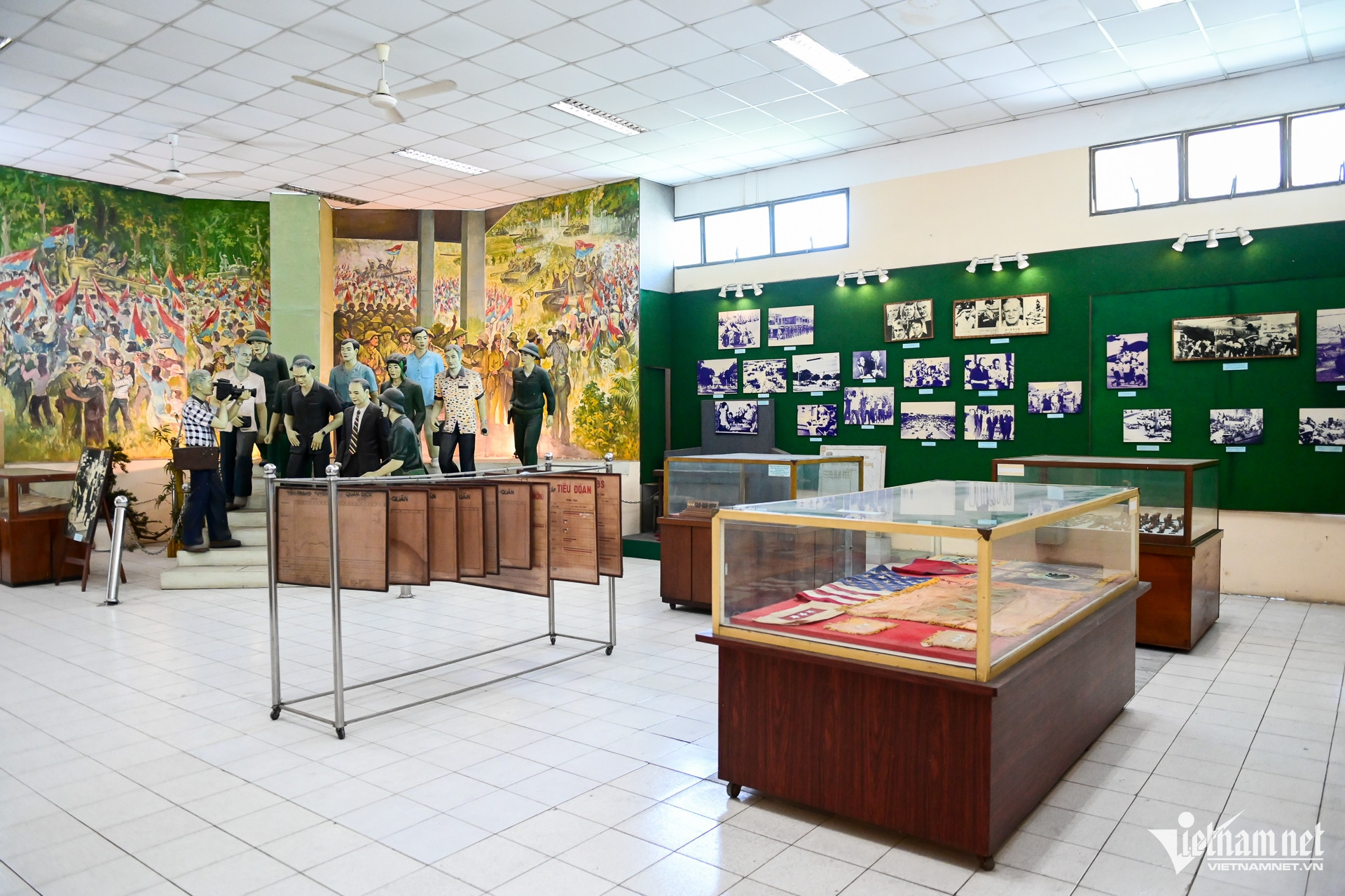
Visitors inside the museum exploring the historical displays.
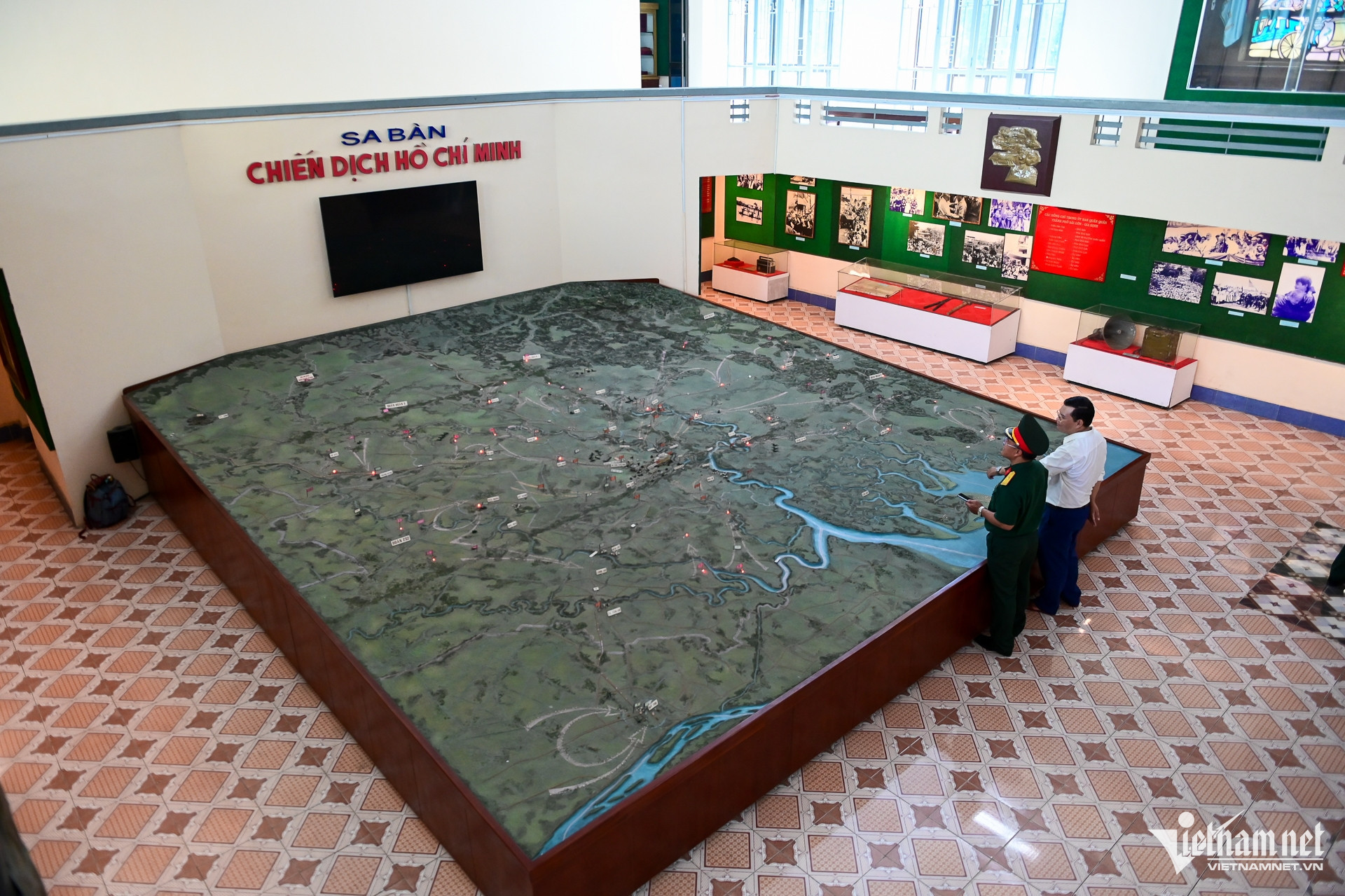
A large 3D topographic map visualizing the key stages of the campaign.
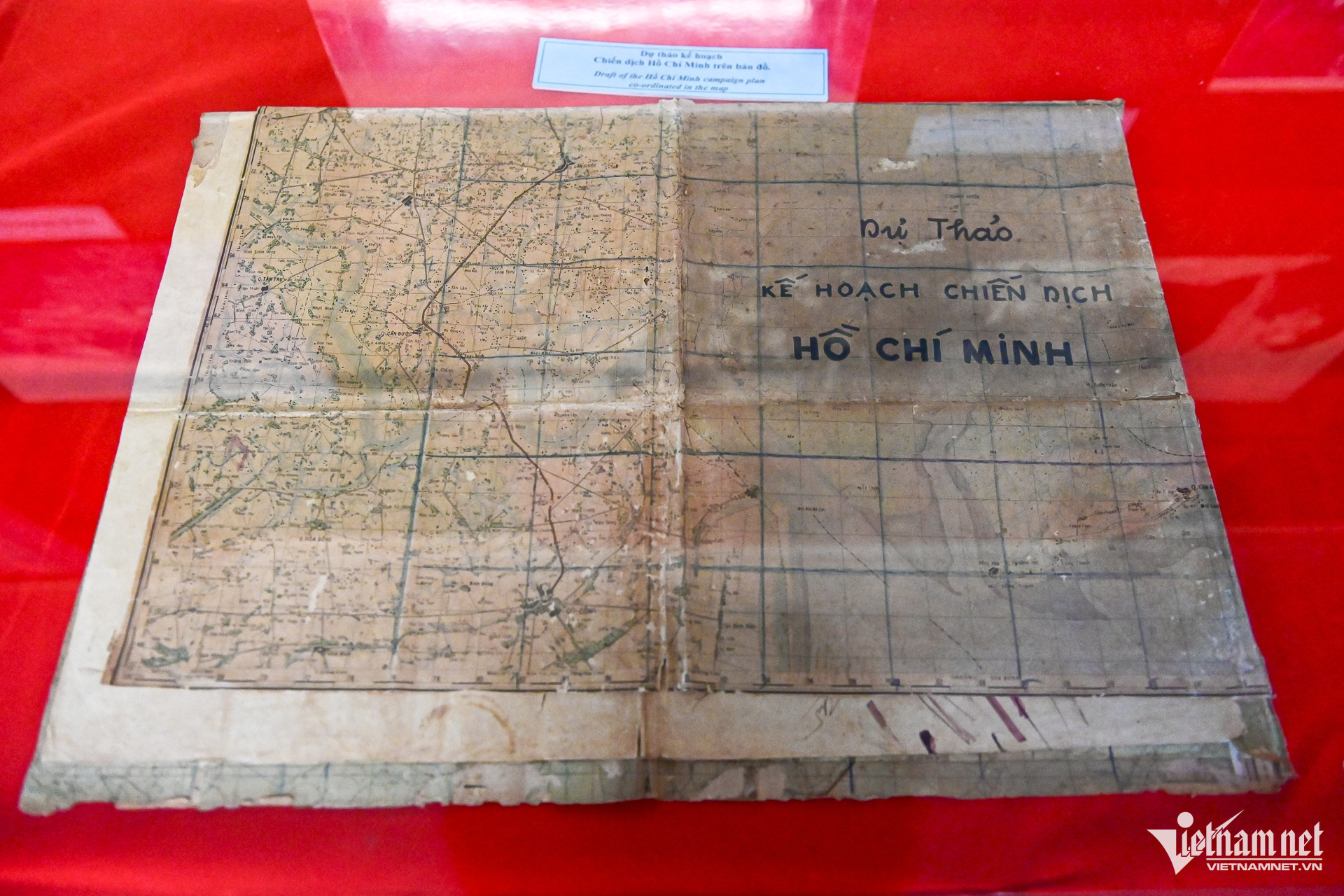
The original draft plan of the Ho Chi Minh Campaign is preserved intact.
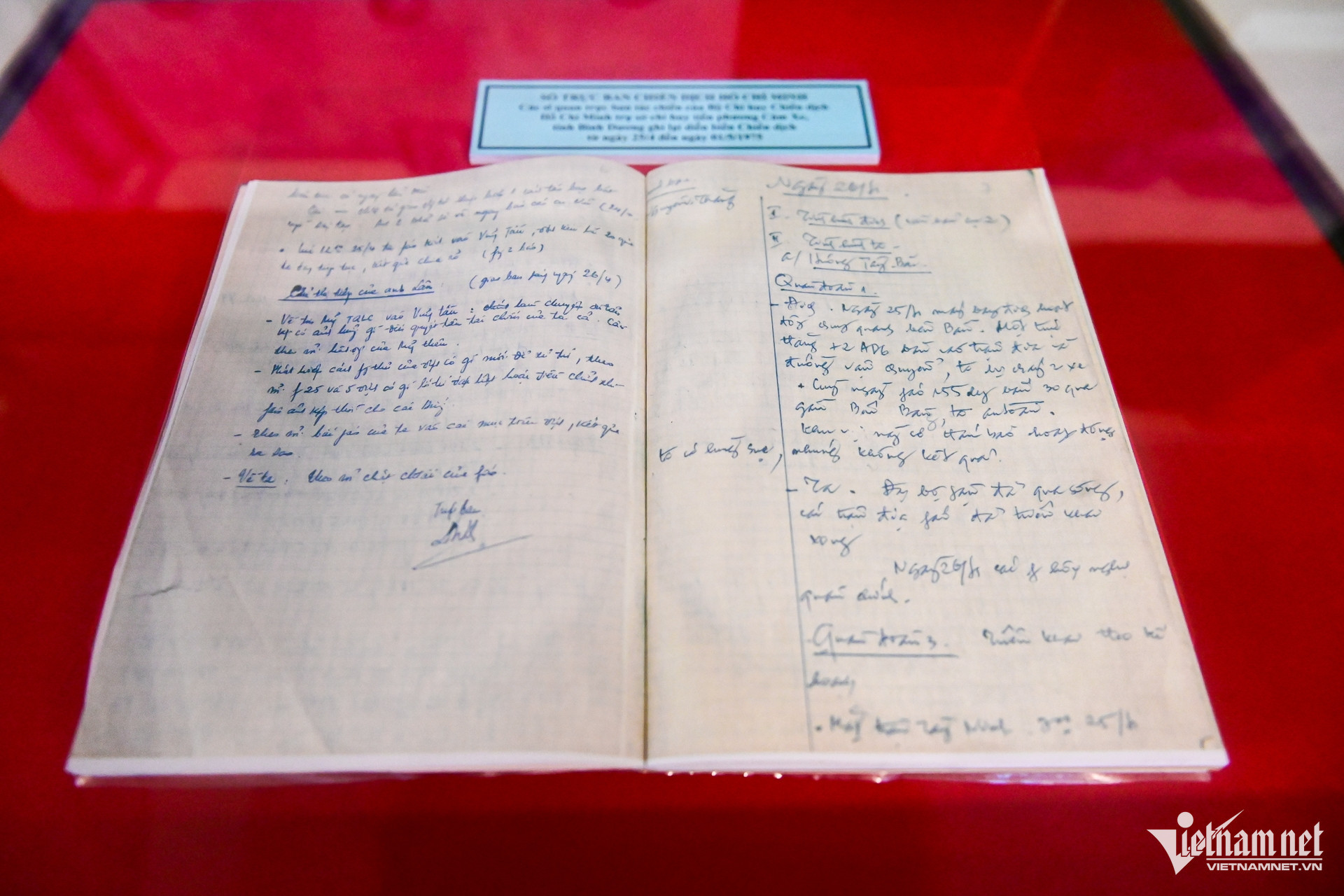
The Ho Chi Minh Campaign Operations Duty Logbook, recognized as a national treasure.
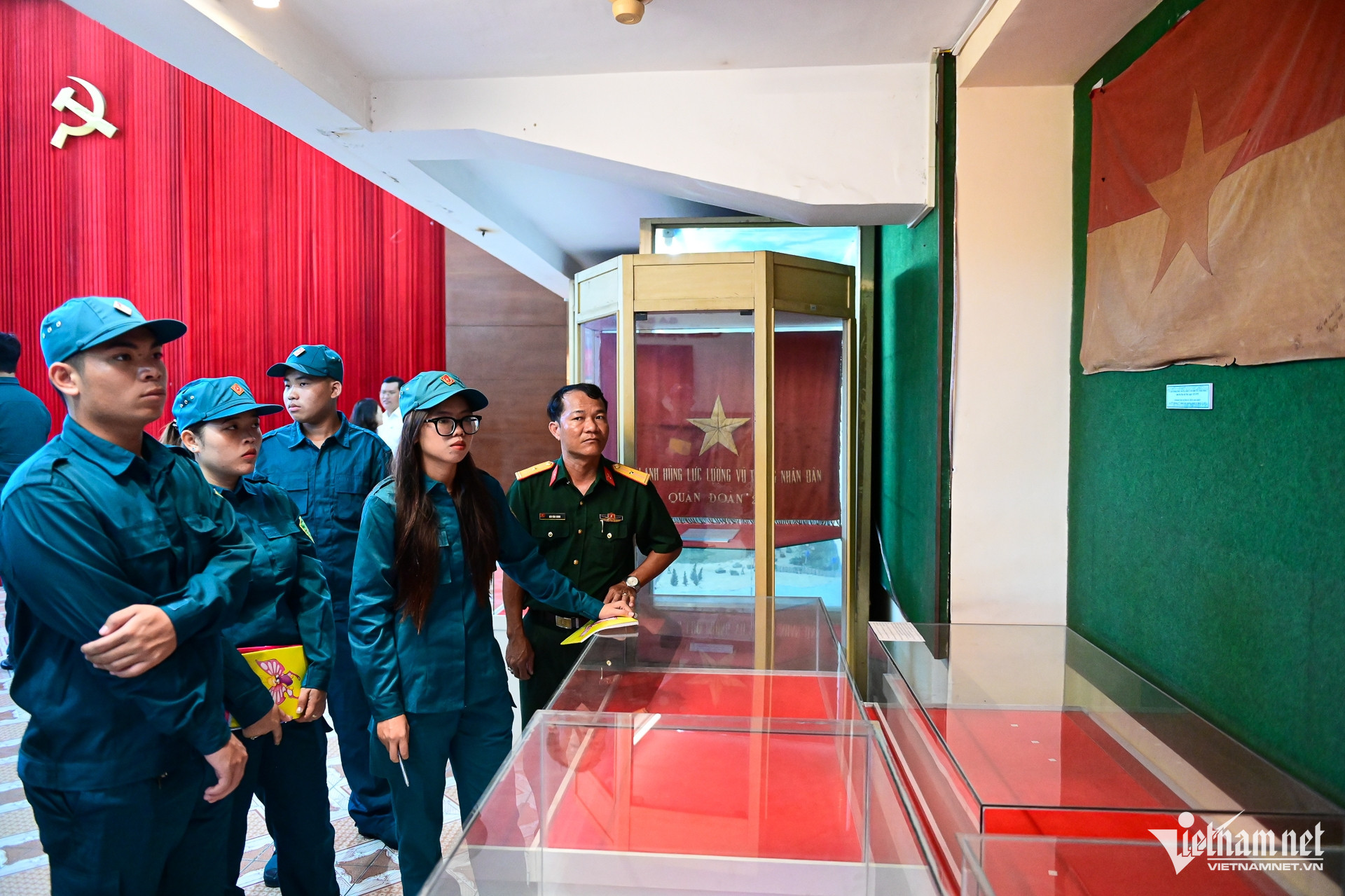
The National Liberation Front flag flown atop Phu Van Lau in Hue, March 1975.
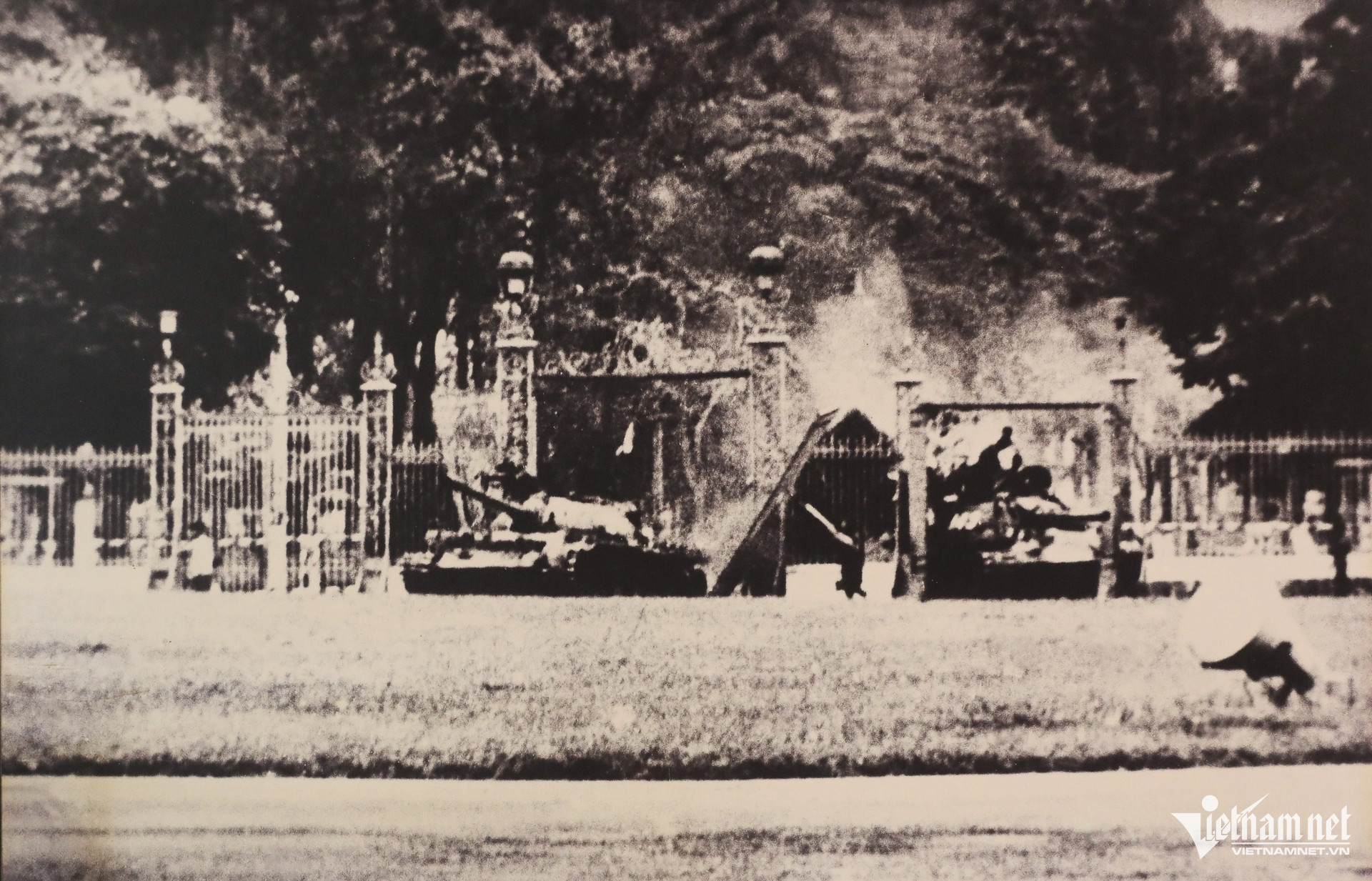

Weapons, flags, and banners from the campaign era.
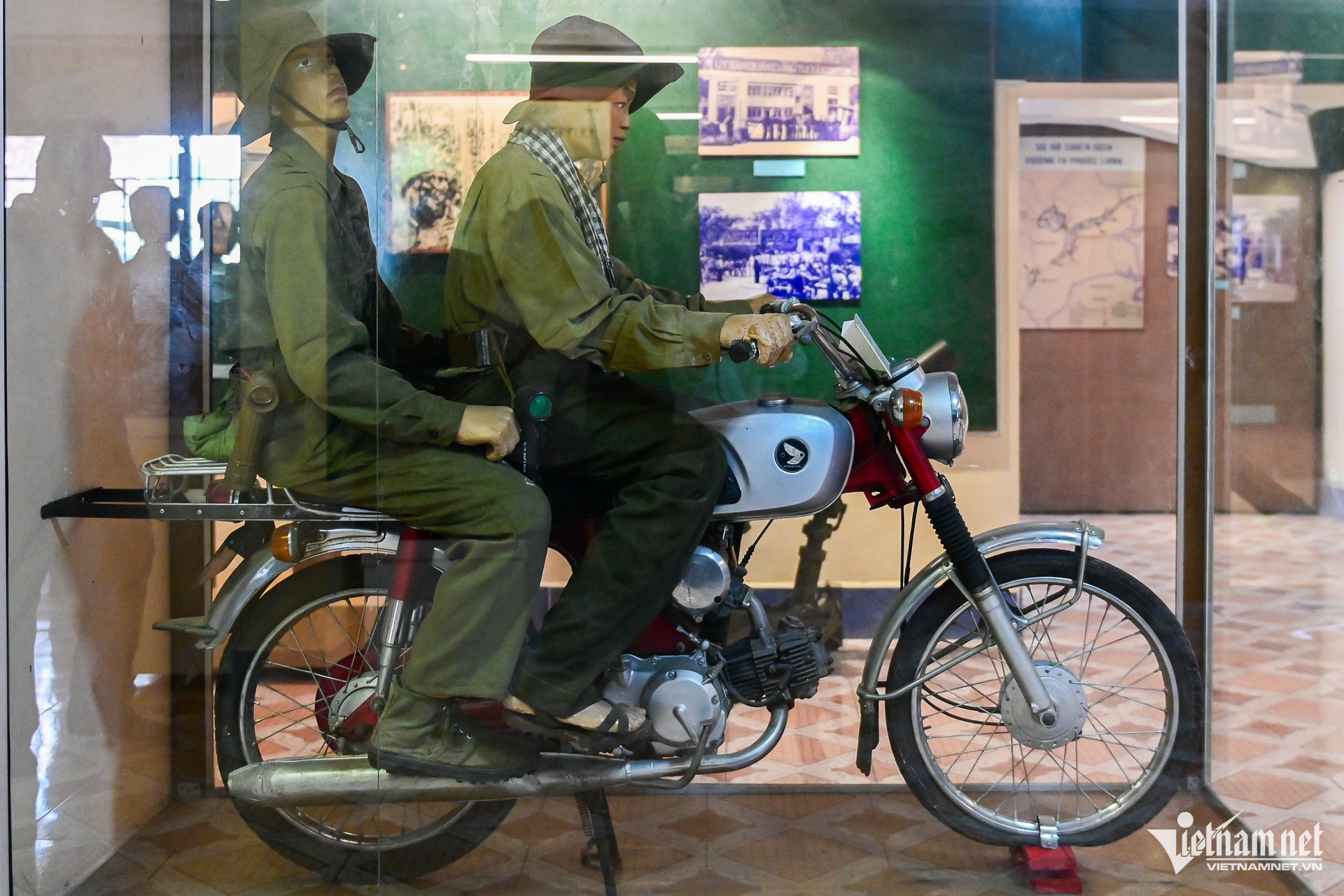
Motorbike used for transporting orders during the war.
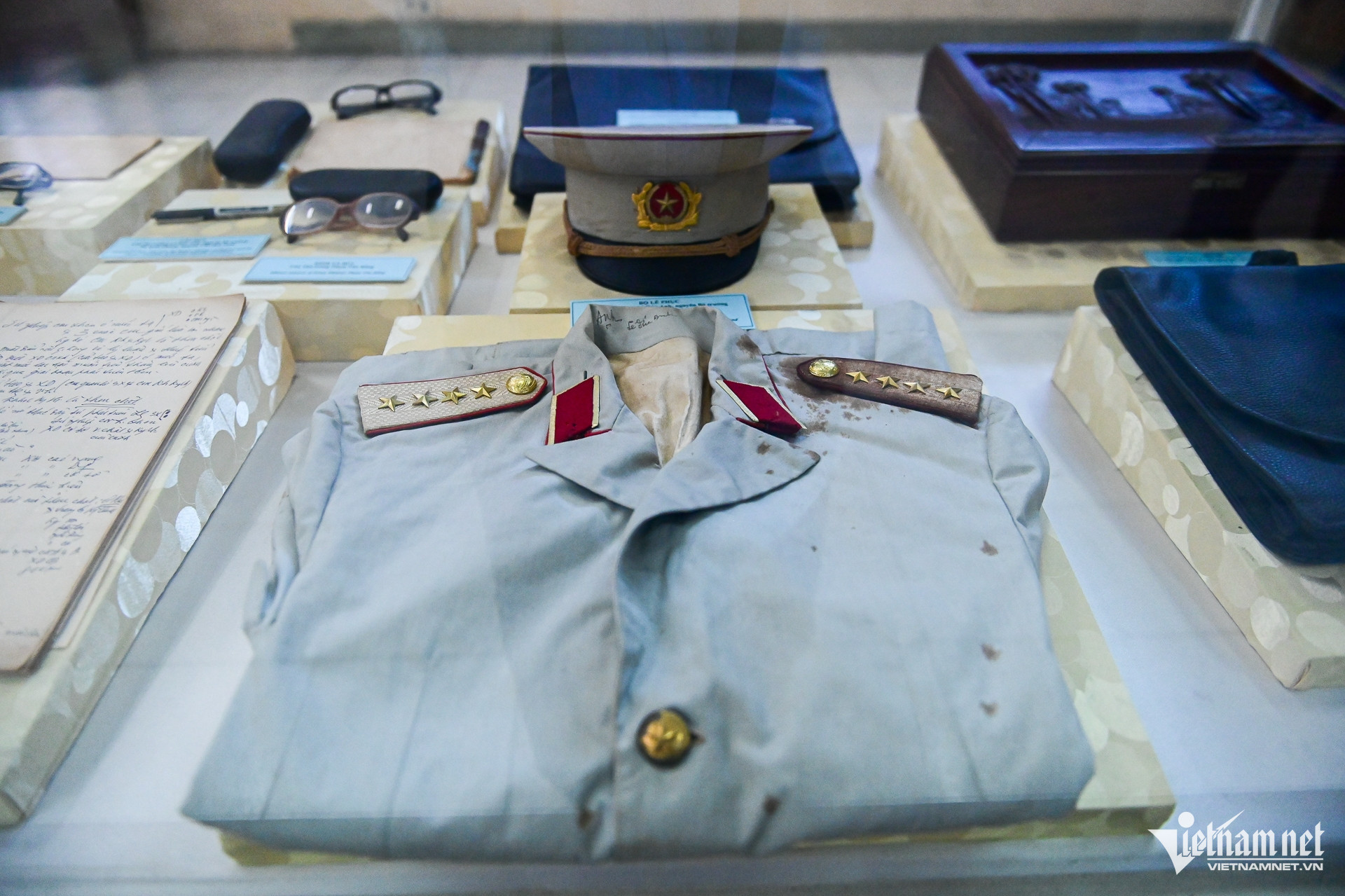
General Le Duc Anh’s ceremonial uniform on display.
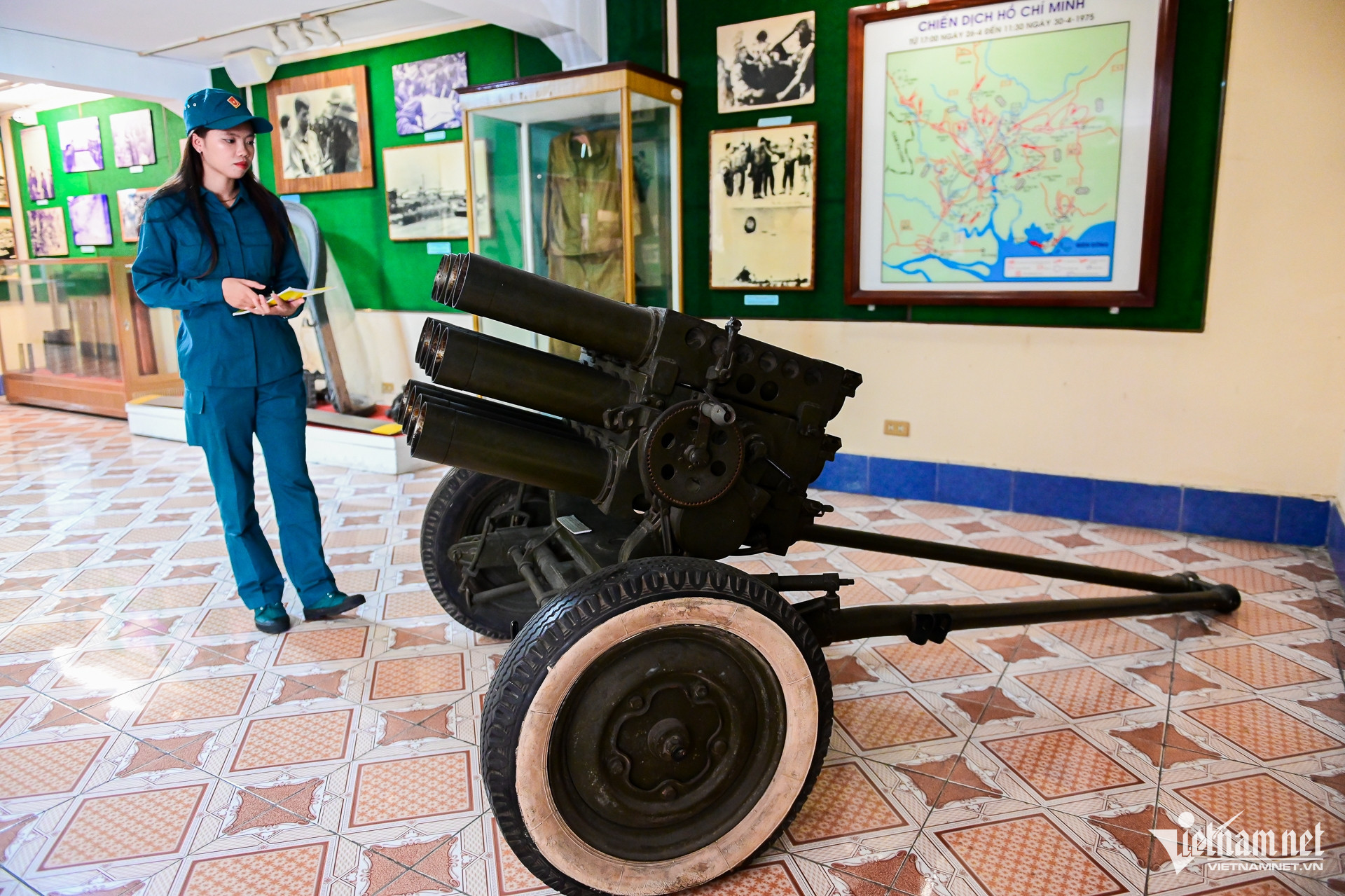
H.12 rocket launcher used during the liberation of Buon Ma Thuot.
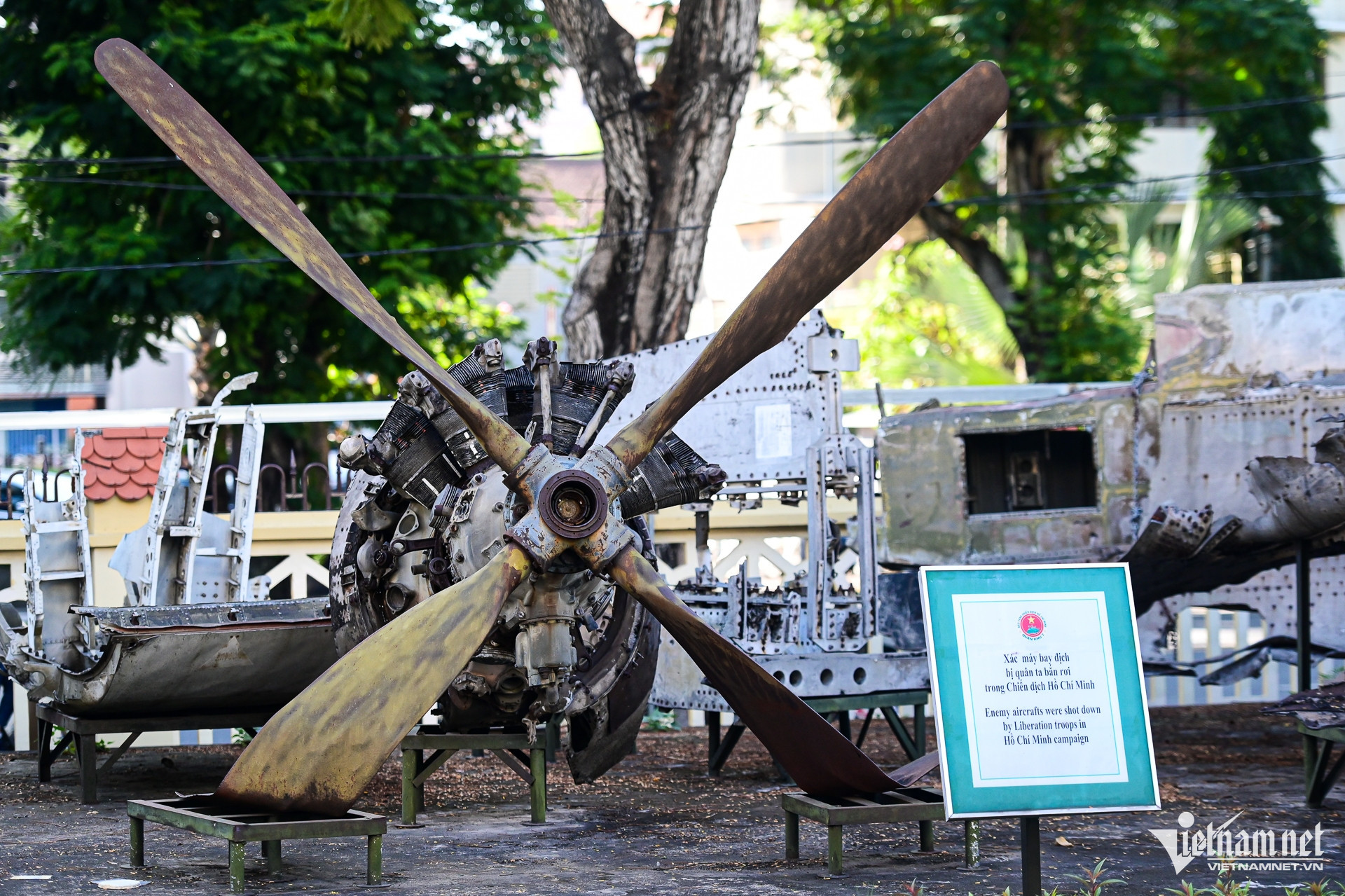
Outdoor exhibit with tanks and downed enemy aircraft.
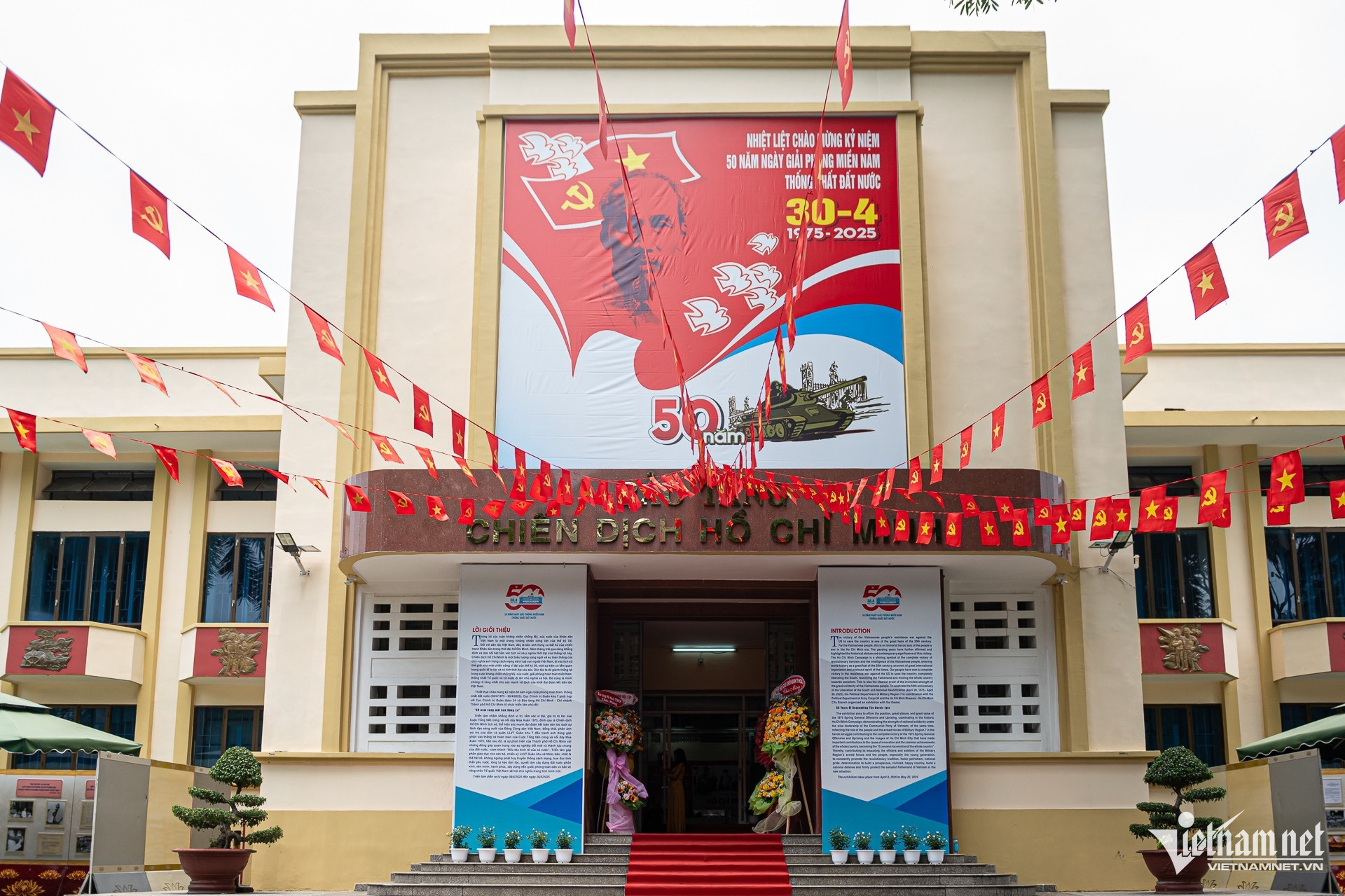
Nguyen Hue